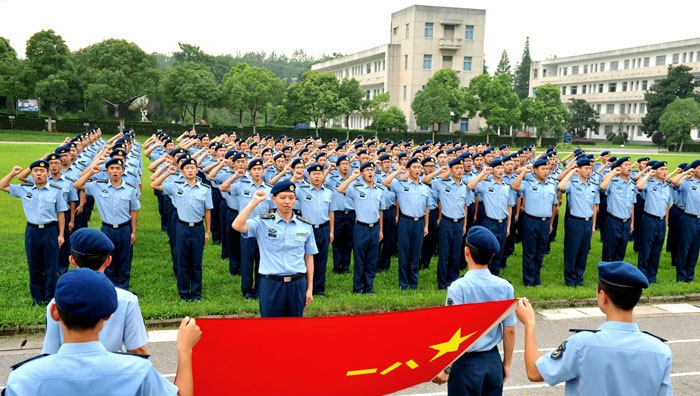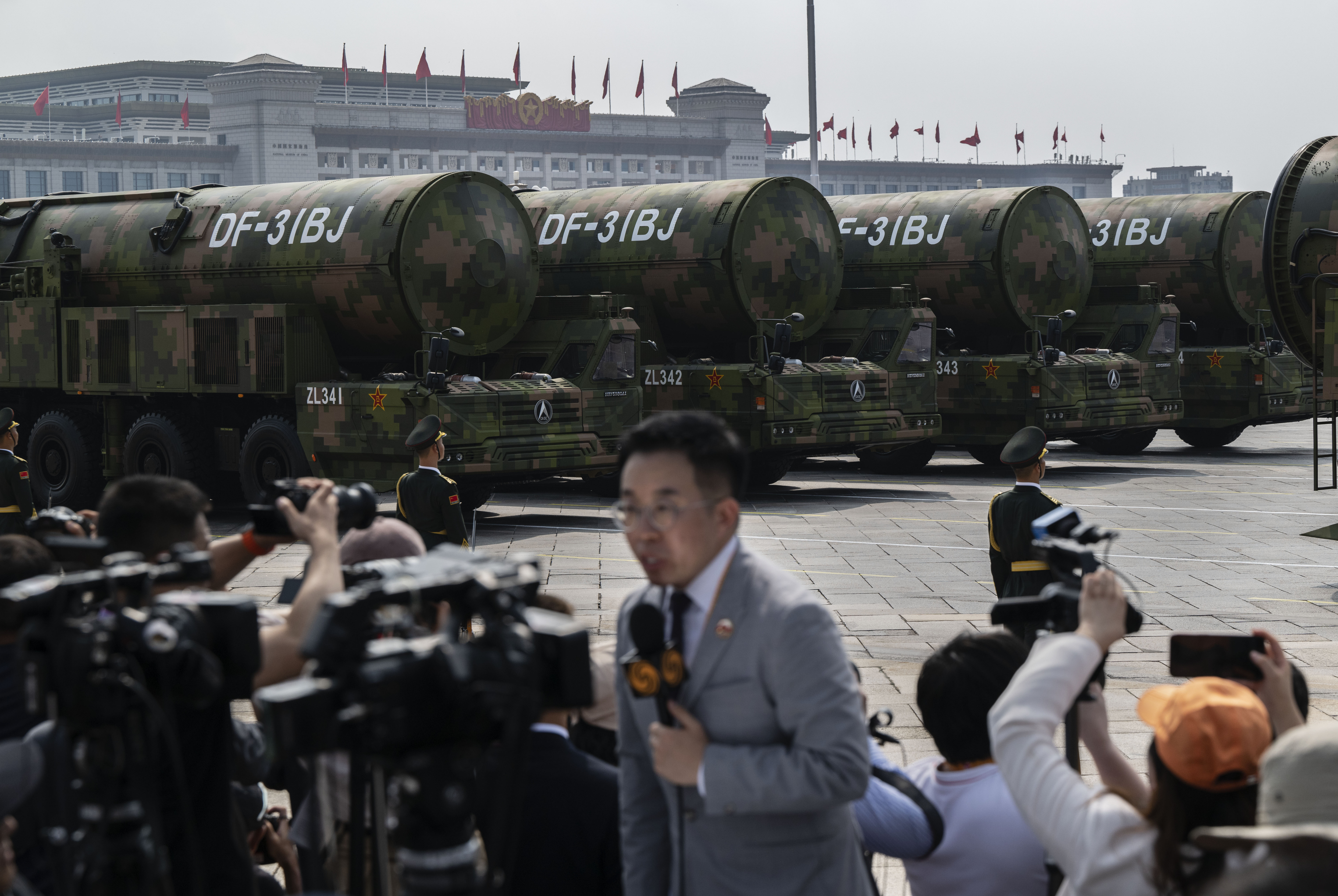
A Look at the PLA’s Youth Aviation Programs
A Look at the PLA’s Youth Aviation Programs
As the People’s Liberation Army Air Force (PLAAF) and the People’s Liberation Army Naval Aviation (PLAN Aviation) prepare for more challenging missions and continue to integrate more advanced aviation platforms into their inventory, their need for talented and experienced pilots and aviators is increasing. To help meet this need, the PLAAF and PLAN Aviation have developed a number of youth aviation schools (青少年航空学校) to provide flight training to select high school students [1]. The aim of this program is to help supply the Air Force Aviation University (空军航空大学), the Naval Aviation University (海军航空大学) and other military colleges and civilian aviation universities with talented students who have been both carefully vetted for suitability and interest in aviation, and provided with basic aviation instruction.
The PRC’s interests are becoming increasingly global, confronting the PLAAF and PLA Navy (PLAN) are facing new tasks and challenges. The PLAAF is seeking to become a “strategic air force” (战略空军), which includes the ability to protect China’s national interests at home and abroad, and attaining capabilities on par with major powers (China Brief, October 2, 2015). The development of aircraft carriers has also created huge demand for well trained fighter pilots within the PLAN Aviation (ChinaMilitary, September 19).
But aviator quality and capability continues to be a major limiting factor for the PLA. According to a recent study on pilot training, PLAAF pilots are struggling to adjust to concepts and tasks related to new training missions. The study found that PLAAF pilots often lack the necessary tactical skills to perform exercises, and frequently still rely heavily on ground control for their maneuvers, which limits pilot autonomy. Pilots also frequently display lax discipline, have trouble coordinating with other PLAAF branches, and are unable to adapt to in-flight changes, which leads to mission failure (The National Interest, October 27, 2016). Faced with these challenges, the PLAAF and PLAN view youth aviation schools as a means to help improve the quality and quantity of their pilots and aviators, starting at a very young age.
In 2011 the PLAAF initiated an experimental youth aviation program at two high schools in Wuhan and Changchun. In 2014, this program produced 96 graduates, 40% of whom were accepted into university aviation programs, including the joint programs between the Air Force Aviation University and Beijing University, Tsinghua University and the Beijing University of Aeronautics and Astronautics (PLA Daily, September 3). The PLAAF expanded and institutionalized the youth aviation program in 2015, when the former General Political Department of the PLA, along with the Ministry of Education and the Ministry of Public Security, issued the “Implementation Measures for the Construction of Air Force Youth Aviation Schools” (空军青少年航空学校建设实施办法) and established 16 air force youth aviation schools at provincial-level, demonstration high schools (示范高中) in 11 provinces (PRC Ministry of National Defense, November 7, 2017). In 2015 the PLAN Aviation established its own experimental aviation programs in two high schools, expanding to nine schools in 2017. It plans to open six more in the future (www.sdclyz.cn, October 31, 2015; People’s Daily, July 19).
Youth aviation schools are viewed as a key factor in the development of top aviation talent. According to a researcher at the PLAAF Aviator Recruitment Bureau (空军招飞局), early flight training experience was a key factor in the successful combat performance of many of the most successful military aviators in history (ChinaNews, March 25, 2015). The PRC has previous experience with youth aviation programs and has used flying programs to expose young people to aviation. In 1955 China established 77 gliding schools for junior high school students. By 1979, the program had produced 12,000 flight students, many of whom became aviators and senior leaders (PLA Daily, September 3).
Admission to the youth aviation programs is very selective; students are recruited from among the top junior high school graduates. Applicants must be between the ages of 14 to 16, have academic scores in the top 15% of their class, be in excellent health, meet height and weight requirements, and have excellent eyesight. Candidates go through a detailed and comprehensive physical and psychological examination; the medical portion alone includes 240 separate examination items. In addition to physical and academic requirements, applicants must also have proper political qualifications (China Military, May 23, 2017).
Interest on the part of young people in the youth aviation schools appears high. In 2017, there were 10,473 applicants from the three provinces of Liaoning, Jilin and Heilongjiang alone (China Military, May 23, 2017). The PLAAF seeks to recruit about 1,000 students into its program each year (China Military, November 17, 2107), while PLAN Aviation will likely seek a similar number when it expands its program from the current nine schools, to fifteen schools.
Youth aviation schools are paired with high quality provincial-level high schools, which are funded by the provincial government, and recruit students from the entire province. Students in the youth aviation programs take normal high school courses in addition to their aviation classes and training. The actual aviation training program consists of three years of classes in national defense education, military fitness, aviation knowledge, and flight training (ChinaMilitary, May 3, 2017). In their first year, students receive instruction in basic aviation topics such as aviation theory, navigation, meteorology, and aviation rescue. Students are introduced to flight simulators during their second year. At the end of the second year, students spend half a month during the summer in flight training.
In previous years, flight training was contracted out to local civilian flight schools, but in 2018 the PLAAF took over this responsibility and began to train students according to Air Force Aviation University training methods. 800 students from youth aviation schools were sent to flight training at the Air Force Aviation University’s six affiliated training locations. Students receive flight instruction in the CJ-6, the PLAAF’s basic trainer for all aircraft, and take five orientation flights during the summer training session. Students also make visits to nearby military installations to receive lectures from senior aviators (PLA Daily, September 3). During this period of training, students are evaluated by a team of cadres from the Air Force Aviation University (Apple News, July 24, 2018), graded on their performance, with the points accrued added to the students’ college entrance exam to form a combined score (Ministry of National Defense, November 7, 2017).
In contrast to the PLAAF, the PLAN Aviation continues to utilize civilian flight schools to train students. Students are taught basic theory and undergo simulator training. Students receive about ten total hours of flight training in a Cessna 172, during which they are accompanied by a senior instructor. The navy sends aviators from the Naval Aviation College and local navy units to oversee the quality and safety of the training, during which students are evaluated and graded by PLAN cadres (China Military Network, July 18).
Students in youth aviation schools are provided with free tuition and receive a stipend for food and living expenses. They live in separate dormitories and receive several sets of uniforms. The air force offers 10,000 RMB ($1,470) a year for food, and a monthly allowance of 400 RMB ($60). High-performing students can also receive a yearly scholarship of up to 3,000 RMB ($440) (ThePaper, August 2). Students in the PLAN youth aviation program receive a monthly living stipend of 500 RMB ($73) (www.sdclyz.cn, April 26, 2017). Once in the program, students must maintain excellent health and fitness standards and are given a routine physical examination every month, as well as a comprehensive physical examination every semester (www.sdclyz.cn, April 26, 2017) .
At the end of their third year, students in the youth aviation programs participate in an aviator selection process. Qualified students are admitted to the Air Force Aviation University and the Naval Aviation Academy (www.sdclyz.cn, October 31, 2015; PRC Ministry of National Defense, November 7, 2017). Students in the air force youth aviation program can also apply for the dual enrollment program, which allows students to attend Beijing University, Tsinghua University, or the Beijing Aeronautics and Astronautics University (北京航空航天大学) while also receiving aviation training at the Air Force Aviation University, ultimately earning a degree from both institutions (Xinhua, September 28, 2017). Students in the air force youth aviation program can receive up to 60 extra points for admission to this program, depending on their performance in the summer aviation training session. Those who fail to gain acceptance at an aviation-related university can still gain admission into other military colleges and universities (PRC Ministry of National Defense, November 7, 2017). Students in the navy’s program can also receive a sixty point bonus on admission to Tsinghua University or the Beijing Aeronautics and Astronautics University (www.sdclyz.cn, April 26, 2017). Students who fail to be admitted to the Naval Aviation Academy can apply to other naval colleges (www.sdclyz.cn, October 31).
Conclusion
This year marks the first graduating class of the PLAAF Youth Aviation Program. A total of 379 students have been accepted to the Air Force Aviation University, a number which is considered to be successful (PLA Daily, September 3). Additionally, an unknown number of graduates have entered other university aviation programs or other military colleges. In one high school, 20 of the youth aviation program graduates entered other military colleges and 49 students were accepted into the Air Force Aviation University (The Paper, August 2). With improvements to the quality of education, student training and the management system, The PLAAF now feels that its youth aviation program is complete, and a new track for early aviation training has emerged (PLA Daily, September 3). Once the PLAN Aviation expands its youth aviation program to 15 schools, it will likely achieve the same success. The youth aviation programs are now beginning to play a foundational role in the development of China’s future air force and naval aviation talent.
Aaron Jensen is currently a PhD candidate in the International Doctoral Program in Asia-Pacific Studies at National Chengchi University in Taipei, Taiwan.
Notes
[1] Translation note: The PLAAF uses the English name, “Teenagers Aviation School of Air Force.” However, the Chinese term “青少年“ is usually translated as “youth.”


